
In a White House handout photo, President Barack Obama meets with his national security staff to discuss the situation in Syria, in the Situation Room of the White House, in Washington, Aug. 31, 2013. (Photo: Pete Souza / The White House via The New York Times)
Oldspeak: “Disregard Obama Administration propaganda passing as an “intelligence estimate”. It’s bullshit. Very similar to the steaming pile of bullshit that was served up as justification for the illegal war of aggression in Iraq. Distorted, doctored, misleading and secret intelligence that cannot be publicly and independently verified. Nonsense visual evidence of chemical weapons use, in which victims exhibit none of the usual signs of exposure to chemical weapons. Physical evidence collected with no clear chain of custody by U.S. friendly “Syrian Opposition” groups. Open contempt for and attempts to discredit and curtail the investigations of U.N. weapons inspectors, pushing for an attack before independently collected and analyzed to determine what kind of chemical was used and who’s it was. We do not know much of anything for certain as our leaders are leading us to believe. Any so-called “definitive” intelligence is classified. So we’re supposed to trust that our leaders, who’ve repeatedly lied through their teeth on a whole host of issues, are sure “beyond a reasonable doubt” that Syria used chemical weapons?! RIIIIIIGHT…. My thing is, this has ZERO to do with the U.S., it is as Representative Alan Grayson said:
“Our responsibilities are not to ignore the United Nations. Our responsibilities are not to ignore NATO or the Arab League. Our responsibility is not to ignore the international court of The Hague. Our responsibility is not to make vague remarks about red lines and to follow them up with equally vague remarks about violating international norms, which is a cover for saying that they have—that the Syrians have not violated international laws.
I’m very disturbed by this general idea, this notion, that every time we see something bad in the world, we should bomb it. And, in fact, the president himself has criticized that mindset, and now he’s adopted it. It’s simply not our responsibility to act alone and punish this. I’ll give you an example. There is substantial evidence right now, which the Russians have chosen to actually present to the United Nations, unlike the United States at this point, of the rebels using poison gas. Are we going to bomb both sides?
The Daily Caller reported in great detail that the report that the administration relied upon, in which the administration said that the Assad government must have been involved in this attack and ordered this attack because afterward one of the Assad generals commented on it, well, according to The Daily Caller, the comment was “We didn’t do this,” or words to that effect. And the administration has—if that’s the case, if that was the comment, the administration has completely mischaracterized it.
And, in fact, as far as I can tell, not a single member of Congress has actually seen the underlying document. What’s been provided to us so far is a four-page unclassified document and, if we bother to go down to the bowels of the congressional facility here, a 12-page classified document. But that classified document cites 300 underlying intelligence reports, none of which have been released to any member of Congress, despite the fact that we all have classified clearance. And I indicated that if there is some possibility that the administration is misleading the public regarding any of those 300 documents, then that has to be dispelled. We can’t go to war by mistake again.
We are three weeks away from the government shutting down. We are five weeks away from the government running out of money. And we’ve already spent two weeks engaged in a subject where almost everyone feels it’s simply not our responsibility. I said on MSNBC recently that the entire U.S. government, both Democratic and Republican, seems to be suffering from a very bad case of attention deficit disorder. We’re not showing any ability to focus on the things that actually matter in the lives of our constituents. And it’s not getting better; it’s getting worse.”
Getting worse is Iran vowing to support Syria “to the end”. This situation can very quickly escalate from the proxy war it currently is to a regional firestorm. Do we really want to risk wider death and destruction on a war we can’t afford based on unverified evidence to “send a message”? -OSJ
Related Stories:
To Some, U.S. Case For Syrian Gas Attack Has Too Many Holes
Rep. Alan Grayson on Syria: Congress Should Reject “Warmongering” and Focus on Problems at Home
Russia Says it’s Compiled A 100 Page Report Blaming Syrian Rebels For A Chemical Weapons Attack
By Gareth Porter @ Truthout:
Secretary of State John Kerry assured the public that the Obama administration’s summary of the intelligence on which it is basing the case for military action to punish the Assad regime for an alleged use of chemical weapons was put together with an acute awareness of the fiasco of the 2002 Iraq WMD intelligence estimate.
Nevertheless, the unclassified summary of the intelligence assessment made public August 30, 2013, utilizes misleading language evocative of the infamous Iraq estimate’s deceptive phrasing. The summary cites signals, geospatial and human source intelligence that purportedly show that the Syrian government prepared, carried out and “confirmed” a chemical weapons attack on August 21. And it claims visual evidence “consistent with” a nerve gas attack.
But a careful examination of those claims reveals a series of convolutedly worded characterizations of the intelligence that don’t really mean what they appear to say at first glance.
The document displays multiple indications that the integrity of the assessment process was seriously compromised by using language that distorted the intelligence in ways that would justify an attack on Syria.
Spinning the Secret Intelligence
That pattern was particularly clear in the case of the intelligence gathered by covert means. The summary claims, “We intercepted communications involving a senior official intimately familiar with the offensive who confirmed that chemical weapons were used by the regime on August 21 and was concerned with the U.N. inspectors obtaining evidence.”
That seems to indicate that U.S. intelligence intercepted such communiations. But former British Ambassador Craig Murray has pointed out on his blog August 31 that the Mount Troodos listening post in Cyprus is used by British and U.S. intelligence to monitor “all radio, satellite and microwave traffic across the Middle East … ” and that “almost all landline telephone communications in this region is routed through microwave links at some stage [and] picked up on Troodos.”
All intelligence picked by the Troodos listening post is shared between the U.S. and British intelligence, Murray wrote, but no commmunictions such as the ones described in the U.S. intelligence summary were shared with the British Joint Intelligence Organisation. Murray said a personal contact in U.S. intelligence had told him the reason was that the purported intercept came from the Israelis. The Israeli origin of the intelligence was reported in the U.S. press as well, because an Israeli source apparently leaked it to a German magazine.
The clumsy attempt to pass off intelligence claimed dubiously by the Israelis as a U.S. intercept raises a major question about the integrity of the entire document. The Israelis have an interest in promoting a U.S. attack on Syria, and the authenticity of the alleged intercept cannot be assumed. Murray believes that it is fraudulent.
But even if the intercept is authentic, the description of it in the intelligence summary appears to be misleading. Another description of the same intercept leaked to The Cable by an administration official suggests that the summary’s description is extremely tendentious. The story described those same communications as an exchange of “panicked phone calls” between a Syrian Defense Ministry official and someone in a chemical weapons unit in which the defense ministry official was “demanding answers for [about?] a nerve agent strike.” That description clearly suggests that the Syrian senior official’s questions were prompted by the charges being made on August 21 by opposition sources in Ghouta. The use of the word “panicked”, which slants the interpretation made by readers of the document, may have been added later by an official eager to make the story more compatible with the administration’s policy.
But the main problem with the description is that it doesn’t answer the most obvious and important question about the conversation: Did the purported chemical weapons officer at the other end of the line say that the regime had used chemical weapons or not? If the officer said that such weapons had been used, that would obviously have been the primary point of the report of the intercept. But the summary assessment does not say that, so the reader can reasonably infer that the officer did not make any such admission. The significance of the intercept is, therefore, that an admission of chemicals weapons use was not made.
The carefully chosen wording of the summary – the ministry official was “concerned with the U.N. inspectors obtaining evidence” – suggests that the official wanted to make sure that UN inspectors would not find evidence of a nerve gas attack. But it could also mean precisely the opposite – that the official wanted the inspectors to be able ascertain that there was no use of chemical weapons by Syrian forces in eastern Ghouta. The latter possibility is bolstered by the fact that the regime agreed within 24 hours of the first formal request on August 24 from UN envoy Angela Kane for unimpeded access to eastern Ghouta. As late as Friday, August 23, the UN Department of Safety and Security had not yet decided to give permission to the UN investigators to go into the area because of uncertainties about their safety.
The intelligence summary makes no effort to explain why the regime promptly granted access to the investigators. Another anomaly: the fact that the UN investigators were already present in Damascus, having been initially requested by the Assad regime to look into a gas attack the regime had charged was carried out by the rebels on March 19. The two-page assessment by the British Joint Intelligence Organisation released August 29, pointed to this question:”There is no obvious political or military trigger,” it said, “for regime use of Chemical War on an apparently larger scale now, particularly given the current presence of the UN investigating team.”
Another obvious case of a misleading description of intelligence in the summary involves information from US geospatial and signals intelligence purporting to show that the Assad regime was preparing for a chemical attack in the three days prior to August 21. The intelligence summary describes the intelligence as follows: “Syrian chemical weapons personnel were operating in the Damascus suburb of Adra from Sunday, August 18 until early in the morning on Wednesday, August 21 near an area that the regime uses to mix chemical weapons, including sarin.”
That seems like damning evidence at first glance. However, despite the use of the term “operating,” the US intelligence had no information about the actual activities of the individual or individuals being tracked through geospatial and signals intelligence. When administration officials leaked the information to CBS news last week, they conceded that the presence of the individual being tracked in the area in question had been viewed at the time as “nothing out of the ordinary.”
Yet, after the August 21 event, the same information was suddenly transformed into “evidence” that supports the official line. The summary refers to “streams of human signals and geospatial intelligence that revealed regime activities that we assessed were associated with preparations for a chemical attack.” Thus the same information that provided no indication of “preparations” was now presented as though it included knowledge of some “activities” somehow related to getting ready for chemical warfare.
A third piece of intelligence cited in the summary – unsourced but presumably from an intelligence agent – might seem to denote the intent to carry out a chemical weapons attack. However, the wording is slippery. “On August 21,” the document says, “a Syrian regime element prepared for a chemical weapons attack in the Damascus area, including through the utilization of gas masks.” That intelligence, if accurate, doesn’t establish an intent by the government to carry out an attack; it could conversely suggest the government’s anticipation of a chemical attack by the rebels. The intelligence’s language is ambiguous; it contains no certainty that the chemical weapons attack for which the regime was preparing was one it intended to initiate itself.
Behind the Uncertainty on “Nerve Gas”
The intelligence summary includes a notable indication that the intelligence community was far from convinced that nerve gas had been used August 21.
The summary said the intelligence community had “high confidence” that the government had carried out a “chemical weapons attack,” and added, “We further assess that the regime used a nerve agent in the attack.” The fact that a separate sentence was used to characterize the assessment of the nerve agent issue and that it did not indicate any level of confidence is a signal that the intelligence community does not have much confidence in the assessment that nerve gas was used, according to a former senior US intelligence official who insisted on anonymity. The former official told Truthout that the choice of wording actually means the intelligence analysts “do not know” if nerve gas was used.
The summary includes yet another sign of the analysts’ lack of confidence that nerve gas was used, which was equally well-disguised. “We have identified one hundred videos attributed to the attack,” it said, “many of which show large numbers of bodies exhibiting physical signs consistent with, but not unique to, nerve agent exposure.” Unless it is read carefully, the use of the word “bodies” – meaning corpses – instead of “victims” might be missed. But why would the intelligence community be focused on how many “bodies” – meaning corpses – exhibit particular “physical signs” when the far more relevant indicator of nerve gas would the number of “victims” exhibiting certain symptoms?
That strange choice averts acknowledgement of a fundamental problem for the intelligence community: Most of the alleged victims being shown in the videos posted online do not show symptoms associated with exposure to nerve agent. Corpses without any sign of wounds, on the other hand, would be “consistent” with a nerve agent attack.
The symptoms of a nerve agent attack are clear-cut: Soon after initial symptoms of tightness of chest, pinpoint pupils and running nose, the victim begins to vomit and to defecate and urinate uncontrollably, followed by twitching and jerking. Ultimately, the victim becomes comatose and suffocates in a series of convulsive spasms. The symptoms shown in dozens of videos of victims being treated in medical centers in Ghouta, however, are quite different. In an interview with Truthout, Dan Kaszeta, a specialist on chemical, biological and radiological weapons who has advised the White House on those issues, pointed out that a nerve gas attack would have been accompanied by a pattern of symptoms that are not shown in the videos posted online. “There should be more or less universal vomiting,” Kaszeta said. But he did not see any vomiting or evidence of such vomiting on the clothing or on the floor in any of the videos he saw. Stephen G. Johnson, a chemical weapons forensics expert at Cranfield University in the United Kingdom, noticed the same thing. “Why aren’t more people vomiting?” he asked Truthout in an interview.
A number of specialists, including Kaszeta and Johnson, also noticed that personnel were shown handling the victims without any special protective clothing but not exhibiting any symptoms themselves. Paula Vanninen, director of the Finnish Institute for Verification of Chemical Weapons, and Gwynn Winfield, the editor of CBRNe World, a magazine specializing in chemical weapons, made the same point in interviews with AFP on August 21. The only evidence of such effects is secondhand at best: Statements issued the following day by both the spokesman for the Supreme Military Council of the Free Syrian Army, Khaled Saleh, and the spokesman for its Washington, DC, arm, the Syrian Support Group, said that doctors and “first responders” had reported that they were suffering symptoms of neurotoxic poisoning. Saleh claimed that at least six doctors had died.
Experts noticed yet another anomaly: The number of those treated who survived far outnumbered the dead, contrary to what would be expected in a nerve gas attack. Dr. Ghazwan Bwidany told CBS news August 24 that his mobile medical unit had treated 900 people after the attack and that 70 had died. Medecins Sans Frontieres reported that 3,600 patients had been treated at hospitals in the area of the attack and that 355 had died. Such ratios of survivors to dead were the opposite of what chemical weapons specialists would have expected from a nerve gas attack. Kaszeta told Truthout that the “most nagging doubt” he had about the assumption that a nerve gas attack had taken place is the roughly 10-to-1 ratio of total number treated to the dead. “The proportions are all wrong,” he said. “There should be more dead people.” Johnson agreed. In an actual nerve gas attack, he said, “You’d get some survivors, but it would be very low. This [is] a very low level of lethality.”
These multiple anomalies prompted some specialists to come up with the theory that the government had somehow diluted the nerve gas to make it less detectable and thus made it less lethal. Hamish de Bretton-Gordon, a former commander of the chemical biological and nuclear terrorism unit in the UK Ministry of Defense, told USA Today August 23 that the absence of symptoms associated with nerve gas attack might be explainable by a “low dose” chemical weapons attack.
Three days later, Winfield wrote in an article for CNN that the symptoms seen in the videos indicated “lower toxicity” than was associated with nerve agents. Winfield suggested that nerve agent might have been mixed with other substances that were likely to remain in the environment longer than a nerve agent such as sarin.
But Kaszeta cast doubt on the idea of a “low dose” nerve agent being used. In an interview with blogger Eliot Higgins, who specializes in weapons associated with the Syrian conflict under the name Brown Moses, he said, “There’s not much leeway between the incapacitating doses and lethal doses with Sarin.” The concentration causing any symptoms at all, he said, “would quickly lead to absorption of a lethal dose.”
Case Not Closed
If it wasn’t a nerve gas attack, then, what other chemical weapon could have produced the symptoms exhibited in the videos? In an analysis on the Strongpoint Security website, Kaszeta considered each known type of chemical weapon in turn and concluded that the symptoms exhibited in the videos were not consistent with those associated with any of them. And as Kaszeta told the Israeli daily Ha’aretz, the fact that none of the people treating casualties were suffering obvious symptoms “would seem to rule out most types of military-grade chemical weapons. … ”
Instead of addressing the issue, the intelligence community opted to accept information about the numbers and the cause of death provided by sources that were presumably subject to the influence of opposition forces in the area. The intelligence summary cites a “preliminary U.S. government assessment” that 1,429 people were killed by chemical weapons, including “at least 426 children.” It provides no indication of how the analysts arrived at such a precise estimate, which is highly unusual for an intelligence assessment. The normal practice in arriving at such an estimate is to give a range of figures reflecting different data sources as well as assumptions.
The intelligence community’s main center for analyzing all issues relating to weapons of mass destruction is the CIA’s Office of Weapons Intelligence, Nonproliferation and Arms Control (WINPAC) Center. It is the same center that tilted the 2002 Iraq estimate toward conclusions that were not supported by technical facts. As the Robb-Silverman report on the Iraq WMD intelligence fiasco pointed out, intelligence analysts at WINPAC explained to the staff privately that they had reversed the normal intelligence analysis burden of proof and operated on the assumption that Iraq did have WMD programs.
That dynamic seems to have re-emerged in the case of Syrian chemical weapons, especially with the appearance of hundreds of videos containing highly emotive scenes of children suffering and, in many cases, already having died. The contradiction between the emotionally charged visual evidence and the technical analysis by chemical weapons specialists, however, poses an unresolved issue. The uncertainty about what actually happened on August 21 can be resolved only on the basis of actual blood samples from victims who have been gathered by the UN inspectors and are now being analyzed in European laboratories.
Both Médecins Sans Frontières and Human Rights Watch issued statements citing statistics and descriptions of symptoms provided by local medical personnel and, in the case of Human Rights Watch, local activists and other contacts. However Human Rights Watch acting Middle East Director Joe Stork stated, “The only way to find out what really happened in Ghouta is let the UN inspectors in.”
Médecins Sans Frontières made it clear in its original August 24 statement that it could not confirm the figure of 3,600 patients with “neurotoxic symptoms,” because its own staff did not have access to the medical facilities in question. And in an August 28 statement, the organization said scientific confirmation of the toxic agent was required, and that the data it had been given could not be a “substitute for the [UN] investigation.”
But the advocates of an attack on Syria within the Obama administration have not demonstrated a willingness to rely on the definitive evidence from the UN investigators. Instead, they have evinced a strong hostility toward the UN investigation ever since the Syrian government agreed to allow it unimpeded access to the locations where chemical attacks were alleged. National Security Adviser Susan Rice sent an e-mail to key officials August 25 asserting that the UN investigation was pointless.
Since then, administration officials have dismissed the UN investigation as representing a Syrian political tactic. Kerry claimed in his statement Friday that when the UN inspections were “finally given access, that access – as we now know – was restricted and controlled.”
But Farhan Haq, the associate spokesperson for Secretary General Ban Ki-Moon, who has been getting regular reports from the UN team on its work in Syria, told Truthout that he was unaware of any restrictions on the team’s work.
The Obama administration has made it clear it does not intend to rely on the UN investigation’s findings. Kerry declared on Sunday that samples of blood and hair from medical personnel in eastern Ghouta had been found to contain traces of sarin nerve gas.
However, those samples did not go through the UN investigators, but were smuggled out of Syria by opposition activists. The spokesman for the Free Syrian Army’s Supreme National Council, Khaled Saleh, had announced August 22 that “activists” had collected their own hair, blood and soil samples and were smuggling them out of the country.
The Obama administration had obtained physiological samples related to previous alleged nerve gas attacks, which had tested positive for sarin, but administration officials had insisted that, without being certain of the chain of custody, “they couldn’t be sure who had handled those samples,” as one official put it.
Despite the knowledge that samples lacking a clear chain of custody could have been tampered with, however, the administration began to disregard that key factor in June. It adopted a policy of accepting such samples as evidence of government guilt, on the argument, as one official explained, “It’s impossible that the opposition is faking the stuff in so many instances in so many locations.”
That policy shift is part of the undeclared framework in which the intelligence assessment was carried out.
Regardless of what evidence emerges in coming weeks, we would do well to note the inconsistencies and misleading language contained in the assessment, bearing in mind the consequences of utilizing ambiguous intelligence to justify an act of war.
Secretary of State John Kerry assured the public that the Obama administration’s summary of the intelligence on which it is basing the case for military action to punish the Assad regime for an alleged use of chemical weapons was put together with an acute awareness of the fiasco of the 2002 Iraq WMD intelligence estimate.
Nevertheless, the unclassified summary of the intelligence assessment made public August 30, 2013, utilizes misleading language evocative of the infamous Iraq estimate’s deceptive phrasing. The summary cites signals, geospatial and human source intelligence that purportedly show that the Syrian government prepared, carried out and “confirmed” a chemical weapons attack on August 21. And it claims visual evidence “consistent with” a nerve gas attack.
But a careful examination of those claims reveals a series of convolutedly worded characterizations of the intelligence that don’t really mean what they appear to say at first glance.
The document displays multiple indications that the integrity of the assessment process was seriously compromised by using language that distorted the intelligence in ways that would justify an attack on Syria.
Spinning the Secret Intelligence
That pattern was particularly clear in the case of the intelligence gathered by covert means. The summary claims, “We intercepted communications involving a senior official intimately familiar with the offensive who confirmed that chemical weapons were used by the regime on August 21 and was concerned with the U.N. inspectors obtaining evidence.”
That seems to indicate that U.S. intelligence intercepted such communiations. But former British Ambassador Craig Murray has pointed out on his blog August 31 that the Mount Troodos listening post in Cyprus is used by British and U.S. intelligence to monitor “all radio, satellite and microwave traffic across the Middle East … ” and that “almost all landline telephone communications in this region is routed through microwave links at some stage [and] picked up on Troodos.”
All intelligence picked by the Troodos listening post is shared between the U.S. and British intelligence, Murray wrote, but no commmunictions such as the ones described in the U.S. intelligence summary were shared with the British Joint Intelligence Organisation. Murray said a personal contact in U.S. intelligence had told him the reason was that the purported intercept came from the Israelis. The Israeli origin of the intelligence was reported in the U.S. press as well, because an Israeli source apparently leaked it to a German magazine.
The clumsy attempt to pass off intelligence claimed dubiously by the Israelis as a U.S. intercept raises a major question about the integrity of the entire document. The Israelis have an interest in promoting a U.S. attack on Syria, and the authenticity of the alleged intercept cannot be assumed. Murray believes that it is fraudulent.
But even if the intercept is authentic, the description of it in the intelligence summary appears to be misleading. Another description of the same intercept leaked to The Cable by an administration official suggests that the summary’s description is extremely tendentious. The story described those same communications as an exchange of “panicked phone calls” between a Syrian Defense Ministry official and someone in a chemical weapons unit in which the defense ministry official was “demanding answers for [about?] a nerve agent strike.” That description clearly suggests that the Syrian senior official’s questions were prompted by the charges being made on August 21 by opposition sources in Ghouta. The use of the word “panicked”, which slants the interpretation made by readers of the document, may have been added later by an official eager to make the story more compatible with the administration’s policy.
But the main problem with the description is that it doesn’t answer the most obvious and important question about the conversation: Did the purported chemical weapons officer at the other end of the line say that the regime had used chemical weapons or not? If the officer said that such weapons had been used, that would obviously have been the primary point of the report of the intercept. But the summary assessment does not say that, so the reader can reasonably infer that the officer did not make any such admission. The significance of the intercept is, therefore, that an admission of chemicals weapons use was not made.
The carefully chosen wording of the summary – the ministry official was “concerned with the U.N. inspectors obtaining evidence” – suggests that the official wanted to make sure that UN inspectors would not find evidence of a nerve gas attack. But it could also mean precisely the opposite – that the official wanted the inspectors to be able ascertain that there was no use of chemical weapons by Syrian forces in eastern Ghouta. The latter possibility is bolstered by the fact that the regime agreed within 24 hours of the first formal request on August 24 from UN envoy Angela Kane for unimpeded access to eastern Ghouta. As late as Friday, August 23, the UN Department of Safety and Security had not yet decided to give permission to the UN investigators to go into the area because of uncertainties about their safety.
The intelligence summary makes no effort to explain why the regime promptly granted access to the investigators. Another anomaly: the fact that the UN investigators were already present in Damascus, having been initially requested by the Assad regime to look into a gas attack the regime had charged was carried out by the rebels on March 19. The two-page assessment by the British Joint Intelligence Organisation released August 29, pointed to this question:”There is no obvious political or military trigger,” it said, “for regime use of Chemical War on an apparently larger scale now, particularly given the current presence of the UN investigating team.”
Another obvious case of a misleading description of intelligence in the summary involves information from US geospatial and signals intelligence purporting to show that the Assad regime was preparing for a chemical attack in the three days prior to August 21. The intelligence summary describes the intelligence as follows: “Syrian chemical weapons personnel were operating in the Damascus suburb of Adra from Sunday, August 18 until early in the morning on Wednesday, August 21 near an area that the regime uses to mix chemical weapons, including sarin.”
That seems like damning evidence at first glance. However, despite the use of the term “operating,” the US intelligence had no information about the actual activities of the individual or individuals being tracked through geospatial and signals intelligence. When administration officials leaked the information to CBS news last week, they conceded that the presence of the individual being tracked in the area in question had been viewed at the time as “nothing out of the ordinary.”
Yet, after the August 21 event, the same information was suddenly transformed into “evidence” that supports the official line. The summary refers to “streams of human signals and geospatial intelligence that revealed regime activities that we assessed were associated with preparations for a chemical attack.” Thus the same information that provided no indication of “preparations” was now presented as though it included knowledge of some “activities” somehow related to getting ready for chemical warfare.
A third piece of intelligence cited in the summary – unsourced but presumably from an intelligence agent – might seem to denote the intent to carry out a chemical weapons attack. However, the wording is slippery. “On August 21,” the document says, “a Syrian regime element prepared for a chemical weapons attack in the Damascus area, including through the utilization of gas masks.” That intelligence, if accurate, doesn’t establish an intent by the government to carry out an attack; it could conversely suggest the government’s anticipation of a chemical attack by the rebels. The intelligence’s language is ambiguous; it contains no certainty that the chemical weapons attack for which the regime was preparing was one it intended to initiate itself.
Behind the Uncertainty on “Nerve Gas”
The intelligence summary includes a notable indication that the intelligence community was far from convinced that nerve gas had been used August 21.
The summary said the intelligence community had “high confidence” that the government had carried out a “chemical weapons attack,” and added, “We further assess that the regime used a nerve agent in the attack.” The fact that a separate sentence was used to characterize the assessment of the nerve agent issue and that it did not indicate any level of confidence is a signal that the intelligence community does not have much confidence in the assessment that nerve gas was used, according to a former senior US intelligence official who insisted on anonymity. The former official told Truthout that the choice of wording actually means the intelligence analysts “do not know” if nerve gas was used.
The summary includes yet another sign of the analysts’ lack of confidence that nerve gas was used, which was equally well-disguised. “We have identified one hundred videos attributed to the attack,” it said, “many of which show large numbers of bodies exhibiting physical signs consistent with, but not unique to, nerve agent exposure.” Unless it is read carefully, the use of the word “bodies” – meaning corpses – instead of “victims” might be missed. But why would the intelligence community be focused on how many “bodies” – meaning corpses – exhibit particular “physical signs” when the far more relevant indicator of nerve gas would the number of “victims” exhibiting certain symptoms?
That strange choice averts acknowledgement of a fundamental problem for the intelligence community: Most of the alleged victims being shown in the videos posted online do not show symptoms associated with exposure to nerve agent. Corpses without any sign of wounds, on the other hand, would be “consistent” with a nerve agent attack.
The symptoms of a nerve agent attack are clear-cut: Soon after initial symptoms of tightness of chest, pinpoint pupils and running nose, the victim begins to vomit and to defecate and urinate uncontrollably, followed by twitching and jerking. Ultimately, the victim becomes comatose and suffocates in a series of convulsive spasms. The symptoms shown in dozens of videos of victims being treated in medical centers in Ghouta, however, are quite different. In an interview with Truthout, Dan Kaszeta, a specialist on chemical, biological and radiological weapons who has advised the White House on those issues, pointed out that a nerve gas attack would have been accompanied by a pattern of symptoms that are not shown in the videos posted online. “There should be more or less universal vomiting,” Kaszeta said. But he did not see any vomiting or evidence of such vomiting on the clothing or on the floor in any of the videos he saw. Stephen G. Johnson, a chemical weapons forensics expert at Cranfield University in the United Kingdom, noticed the same thing. “Why aren’t more people vomiting?” he asked Truthout in an interview.
A number of specialists, including Kaszeta and Johnson, also noticed that personnel were shown handling the victims without any special protective clothing but not exhibiting any symptoms themselves. Paula Vanninen, director of the Finnish Institute for Verification of Chemical Weapons, and Gwynn Winfield, the editor of CBRNe World, a magazine specializing in chemical weapons, made the same point in interviews with AFP on August 21. The only evidence of such effects is secondhand at best: Statements issued the following day by both the spokesman for the Supreme Military Council of the Free Syrian Army, Khaled Saleh, and the spokesman for its Washington, DC, arm, the Syrian Support Group, said that doctors and “first responders” had reported that they were suffering symptoms of neurotoxic poisoning. Saleh claimed that at least six doctors had died.
Experts noticed yet another anomaly: The number of those treated who survived far outnumbered the dead, contrary to what would be expected in a nerve gas attack. Dr. Ghazwan Bwidany told CBS news August 24 that his mobile medical unit had treated 900 people after the attack and that 70 had died. Medecins Sans Frontieres reported that 3,600 patients had been treated at hospitals in the area of the attack and that 355 had died. Such ratios of survivors to dead were the opposite of what chemical weapons specialists would have expected from a nerve gas attack. Kaszeta told Truthout that the “most nagging doubt” he had about the assumption that a nerve gas attack had taken place is the roughly 10-to-1 ratio of total number treated to the dead. “The proportions are all wrong,” he said. “There should be more dead people.” Johnson agreed. In an actual nerve gas attack, he said, “You’d get some survivors, but it would be very low. This [is] a very low level of lethality.”
These multiple anomalies prompted some specialists to come up with the theory that the government had somehow diluted the nerve gas to make it less detectable and thus made it less lethal. Hamish de Bretton-Gordon, a former commander of the chemical biological and nuclear terrorism unit in the UK Ministry of Defense, told USA Today August 23 that the absence of symptoms associated with nerve gas attack might be explainable by a “low dose” chemical weapons attack.
Three days later, Winfield wrote in an article for CNN that the symptoms seen in the videos indicated “lower toxicity” than was associated with nerve agents. Winfield suggested that nerve agent might have been mixed with other substances that were likely to remain in the environment longer than a nerve agent such as sarin.
But Kaszeta cast doubt on the idea of a “low dose” nerve agent being used. In an interview with blogger Eliot Higgins, who specializes in weapons associated with the Syrian conflict under the name Brown Moses, he said, “There’s not much leeway between the incapacitating doses and lethal doses with Sarin.” The concentration causing any symptoms at all, he said, “would quickly lead to absorption of a lethal dose.”
Case Not Closed
If it wasn’t a nerve gas attack, then, what other chemical weapon could have produced the symptoms exhibited in the videos? In an analysis on the Strongpoint Security website, Kaszeta considered each known type of chemical weapon in turn and concluded that the symptoms exhibited in the videos were not consistent with those associated with any of them. And as Kaszeta told the Israeli daily Ha’aretz, the fact that none of the people treating casualties were suffering obvious symptoms “would seem to rule out most types of military-grade chemical weapons. … “
Instead of addressing the issue, the intelligence community opted to accept information about the numbers and the cause of death provided by sources that were presumably subject to the influence of opposition forces in the area. The intelligence summary cites a “preliminary U.S. government assessment” that 1,429 people were killed by chemical weapons, including “at least 426 children.” It provides no indication of how the analysts arrived at such a precise estimate, which is highly unusual for an intelligence assessment. The normal practice in arriving at such an estimate is to give a range of figures reflecting different data sources as well as assumptions.
The intelligence community’s main center for analyzing all issues relating to weapons of mass destruction is the CIA’s Office of Weapons Intelligence, Nonproliferation and Arms Control (WINPAC) Center. It is the same center that tilted the 2002 Iraq estimate toward conclusions that were not supported by technical facts. As the Robb-Silverman report on the Iraq WMD intelligence fiasco pointed out, intelligence analysts at WINPAC explained to the staff privately that they had reversed the normal intelligence analysis burden of proof and operated on the assumption that Iraq did have WMD programs.
That dynamic seems to have re-emerged in the case of Syrian chemical weapons, especially with the appearance of hundreds of videos containing highly emotive scenes of children suffering and, in many cases, already having died. The contradiction between the emotionally charged visual evidence and the technical analysis by chemical weapons specialists, however, poses an unresolved issue. The uncertainty about what actually happened on August 21 can be resolved only on the basis of actual blood samples from victims who have been gathered by the UN inspectors and are now being analyzed in European laboratories.
Both Médecins Sans Frontières and Human Rights Watch issued statements citing statistics and descriptions of symptoms provided by local medical personnel and, in the case of Human Rights Watch, local activists and other contacts. However Human Rights Watch acting Middle East Director Joe Stork stated, “The only way to find out what really happened in Ghouta is let the UN inspectors in.”
Médecins Sans Frontières made it clear in its original August 24 statement that it could not confirm the figure of 3,600 patients with “neurotoxic symptoms,” because its own staff did not have access to the medical facilities in question. And in an August 28 statement, the organization said scientific confirmation of the toxic agent was required, and that the data it had been given could not be a “substitute for the [UN] investigation.”
But the advocates of an attack on Syria within the Obama administration have not demonstrated a willingness to rely on the definitive evidence from the UN investigators. Instead, they have evinced a strong hostility toward the UN investigation ever since the Syrian government agreed to allow it unimpeded access to the locations where chemical attacks were alleged. National Security Adviser Susan Rice sent an e-mail to key officials August 25 asserting that the UN investigation was pointless.
Since then, administration officials have dismissed the UN investigation as representing a Syrian political tactic. Kerry claimed in his statement Friday that when the UN inspections were “finally given access, that access – as we now know – was restricted and controlled.”
But Farhan Haq, the associate spokesperson for Secretary General Ban Ki-Moon, who has been getting regular reports from the UN team on its work in Syria, told Truthout that he was unaware of any restrictions on the team’s work.
The Obama administration has made it clear it does not intend to rely on the UN investigation’s findings. Kerry declared on Sunday that samples of blood and hair from medical personnel in eastern Ghouta had been found to contain traces of sarin nerve gas.
However, those samples did not go through the UN investigators, but were smuggled out of Syria by opposition activists. The spokesman for the Free Syrian Army’s Supreme National Council, Khaled Saleh, had announced August 22 that “activists” had collected their own hair, blood and soil samples and were smuggling them out of the country.
The Obama administration had obtained physiological samples related to previous alleged nerve gas attacks, which had tested positive for sarin, but administration officials had insisted that, without being certain of the chain of custody, “they couldn’t be sure who had handled those samples,” as one official put it.
Despite the knowledge that samples lacking a clear chain of custody could have been tampered with, however, the administration began to disregard that key factor in June. It adopted a policy of accepting such samples as evidence of government guilt, on the argument, as one official explained, “It’s impossible that the opposition is faking the stuff in so many instances in so many locations.”
That policy shift is part of the undeclared framework in which the intelligence assessment was carried out.
Regardless of what evidence emerges in coming weeks, we would do well to note the inconsistencies and misleading language contained in the assessment, bearing in mind the consequences of utilizing ambiguous intelligence to justify an act of war.













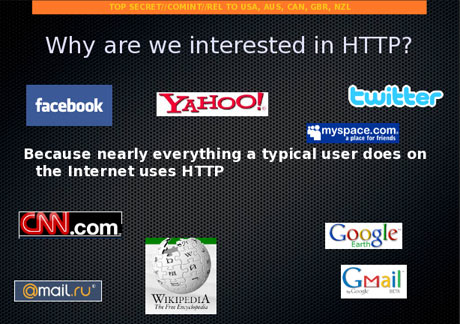
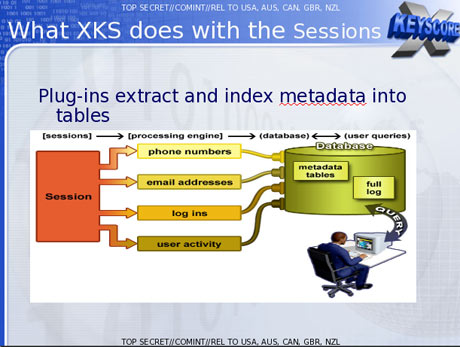
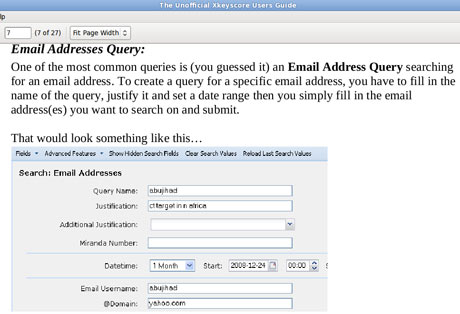
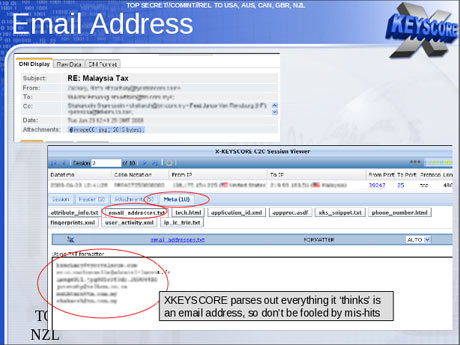

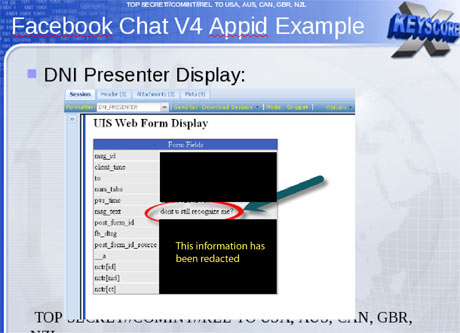
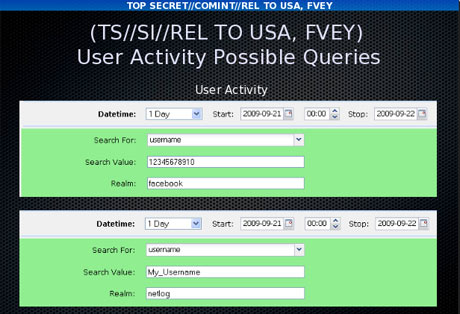

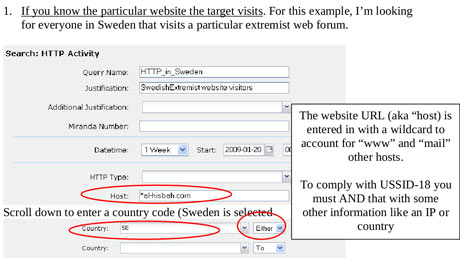
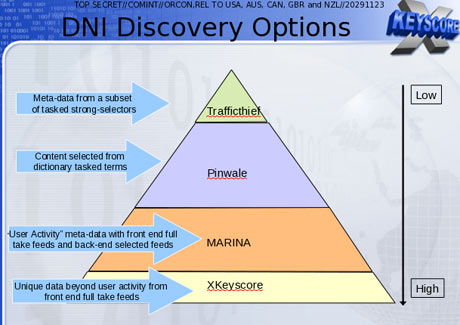

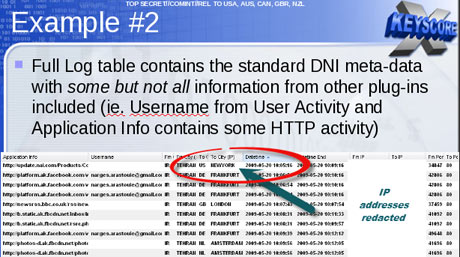
 Oldspeak: “The verdict is clearly an attempt to crush whistleblowers. It’s not going to crush whistleblowers. The problems that exist in the security state in the West, and a few other countries, as well, are as bad as they have ever been, they’re rapidly accelerating. We now have a state within a state in the United States. There are more than five million people with security clearances, more than one million people with top-secret security clearances. The majority of those one million people with top-secret security clearances work for firms like Booz Allen Hamilton and so on, where they are out of the Freedom of Information Act, where they are out of the inspector general of intelligence’s eye. That is creating a new system, a new system of information apartheid, a new asymmetry of information between different groups of people. That’s relating to extensive power inequalities with the—if you like, the essence of the state, the deep state, the intelligence community, lifting off from the rest of the population, developing its own society and going its own way.
Oldspeak: “The verdict is clearly an attempt to crush whistleblowers. It’s not going to crush whistleblowers. The problems that exist in the security state in the West, and a few other countries, as well, are as bad as they have ever been, they’re rapidly accelerating. We now have a state within a state in the United States. There are more than five million people with security clearances, more than one million people with top-secret security clearances. The majority of those one million people with top-secret security clearances work for firms like Booz Allen Hamilton and so on, where they are out of the Freedom of Information Act, where they are out of the inspector general of intelligence’s eye. That is creating a new system, a new system of information apartheid, a new asymmetry of information between different groups of people. That’s relating to extensive power inequalities with the—if you like, the essence of the state, the deep state, the intelligence community, lifting off from the rest of the population, developing its own society and going its own way.




 Oldspeak:”Yet another brilliantly masterful oratory performance by President Obama. Rousing applause and tear-jerking gold. I found it deeply disturbing that the president spoke at length about cuts to social programs like medicare and “entitlement reform” a.k.a. cuts to social security, but rather quickly and matter of factly, asserted that cuts to our military “would jeopardize our military readiness”. This after saying a few short months ago he
Oldspeak:”Yet another brilliantly masterful oratory performance by President Obama. Rousing applause and tear-jerking gold. I found it deeply disturbing that the president spoke at length about cuts to social programs like medicare and “entitlement reform” a.k.a. cuts to social security, but rather quickly and matter of factly, asserted that cuts to our military “would jeopardize our military readiness”. This after saying a few short months ago he 
